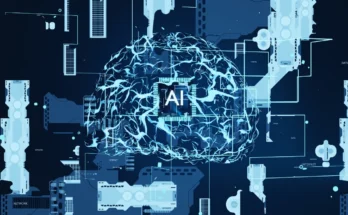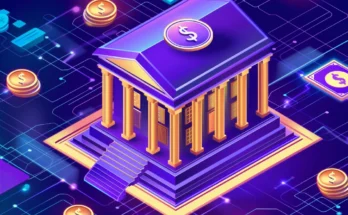Blockchain has become one of the most talked-about technologies in the digital world. From securing cryptocurrencies like Bitcoin to revolutionizing industries such as finance and healthcare, it promises transparency, security, and decentralization. But what is blockchain, really? In this guide, we’ll break down the basics of blockchain technology, how it works, and why it’s shaping the future of digital transactions—all in simple, understandable terms.
The Basics of Blockchain Technology
What is Blockchain in Simple Words?
At its core, blockchain is a type of digital ledger or record-keeping system. Imagine a series of blocks, each containing information. These blocks are connected in a chain, and once a block is added, it cannot be changed or deleted. This ensures that the data within the blockchain remains secure and tamper-proof.
Blockchain technology gained popularity due to its use in cryptocurrencies, but its potential goes far beyond digital money. It can store data about any transaction, from financial exchanges to supply chains.
Why is Blockchain So Secure?
One of the most appealing features of blockchain technology is its security. Traditional databases store information in a centralized system, meaning all data is kept in one place. In contrast, blockchain uses a decentralized system, where data is distributed across a network of computers. This makes it nearly impossible for hackers to alter or manipulate the data.
Furthermore, each block contains a unique code called a “hash,” which ensures that every piece of data in the blockchain is original. If someone attempts to tamper with the information in a block, the hash will change, alerting the entire network that something is wrong.
How Does Blockchain Work?
Blockchain technology operates using a few simple steps:
- A transaction request is made.
- The transaction is verified by a network of computers (nodes).
- Once verified, the transaction is added to a block.
- The block is linked to previous blocks, forming a chain.
- The transaction is completed and recorded permanently.
Each of these steps ensures that blockchain is transparent, secure, and cannot be altered once a block is added.
Key Features of Blockchain Technology
Decentralization
Unlike traditional systems where data is stored in a single location, blockchain technology distributes information across many nodes or computers. This decentralization is one of the core reasons blockchain is so secure—it doesn’t rely on a single point of failure.
Immutability
Once a block is added to the blockchain, it cannot be changed or deleted. This creates a permanent and unalterable record of transactions. Whether you’re storing financial data or tracking product shipments, immutability ensures the integrity of information.
Transparency
Blockchain technology promotes transparency by allowing anyone in the network to view the transactions stored in the chain. While the identities of users are anonymized, the details of the transactions are visible to everyone. This is particularly useful in industries that need clear records, like finance, healthcare, or supply chains.
Consensus Mechanisms
For a transaction to be added to the blockchain, it must be verified through a process called “consensus.” Most blockchains use either Proof of Work (PoW) or Proof of Stake (PoS) as their consensus mechanism. PoW involves solving complex mathematical problems, while PoS allows users to validate transactions based on how much cryptocurrency they hold.
Blockchain Applications Across Industries
Cryptocurrency: The Foundation of Blockchain
When people think of blockchain, they often think of cryptocurrencies like Bitcoin or Ethereum. Blockchain acts as the backbone of these digital currencies, providing a secure, transparent way to transfer money without the need for intermediaries like banks.
But beyond Bitcoin, blockchain technology is being used to create new types of digital assets called “tokens.” These tokens can represent anything of value, from real estate to intellectual property.
Healthcare: Improving Data Security and Access
In the healthcare industry, blockchain can improve data security and streamline patient information. Traditionally, patient records are stored in centralized databases that can be vulnerable to hacking. Blockchain’s decentralized system ensures that patient information is stored securely and only accessible by authorized personnel.
Moreover, blockchain can be used to verify the authenticity of medications, ensuring that patients receive genuine products and helping to combat counterfeit drugs.
Supply Chain Management: Tracking Products Transparently
Blockchain technology is also transforming supply chain management. By using blockchain, companies can track the entire lifecycle of a product, from raw materials to the consumer’s hands. This level of transparency helps businesses ensure the authenticity of their products and gives consumers greater confidence in what they’re buying.
For instance, major retailers like Walmart have implemented blockchain technology to track their food products, reducing the time it takes to identify and address issues such as contamination.
The Future of Blockchain Technology
Blockchain Beyond Cryptocurrencies
While blockchain is most well-known for its role in the cryptocurrency market, its potential applications extend far beyond digital money. In the future, we may see blockchain revolutionize voting systems, digital identities, and intellectual property rights. Imagine a voting system where every vote is recorded on a secure, transparent blockchain, eliminating the possibility of election fraud.
Smart Contracts: Automating Transactions
Smart contracts are another exciting development in blockchain technology. These are self-executing contracts where the terms of the agreement are written directly into code. Once the conditions are met, the contract is automatically executed, reducing the need for intermediaries and ensuring that transactions are carried out efficiently.
Smart contracts can be used in various industries, from real estate to insurance, streamlining processes and ensuring trust between parties.
Challenges Ahead
Despite its potential, blockchain still faces challenges. Scalability is one of the primary hurdles—current blockchain networks can only handle a limited number of transactions per second. However, ongoing research and development are focusing on improving blockchain’s scalability and making it more energy-efficient.
Additionally, regulatory frameworks are still evolving. Governments and organizations must work together to create rules that allow for the safe and secure implementation of blockchain technology.
Frequently Asked Questions (FAQs)
- What is blockchain in simple words? Blockchain is a digital system that securely records transactions using blocks of data, all linked together in a chain.
- How does blockchain technology work? Blockchain works by storing data in blocks that are linked together. Each transaction is verified by multiple computers in the network, ensuring security and transparency.
- What are the key features of blockchain? Key features include decentralization, immutability, transparency, and security through consensus mechanisms like Proof of Work or Proof of Stake.
- How is blockchain used in cryptocurrency? Blockchain is the technology behind cryptocurrencies like Bitcoin. It ensures secure and transparent transactions without the need for intermediaries.
- Can blockchain be used outside of finance? Yes, blockchain has applications in healthcare, supply chain management, and even voting systems, providing security, transparency, and efficiency.




